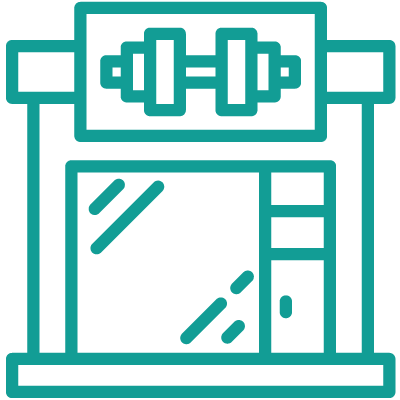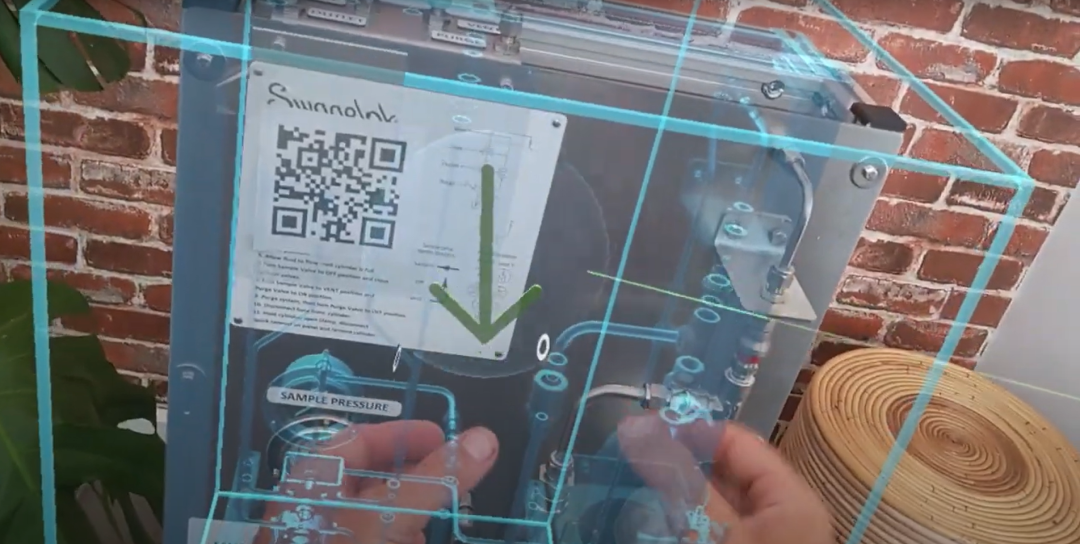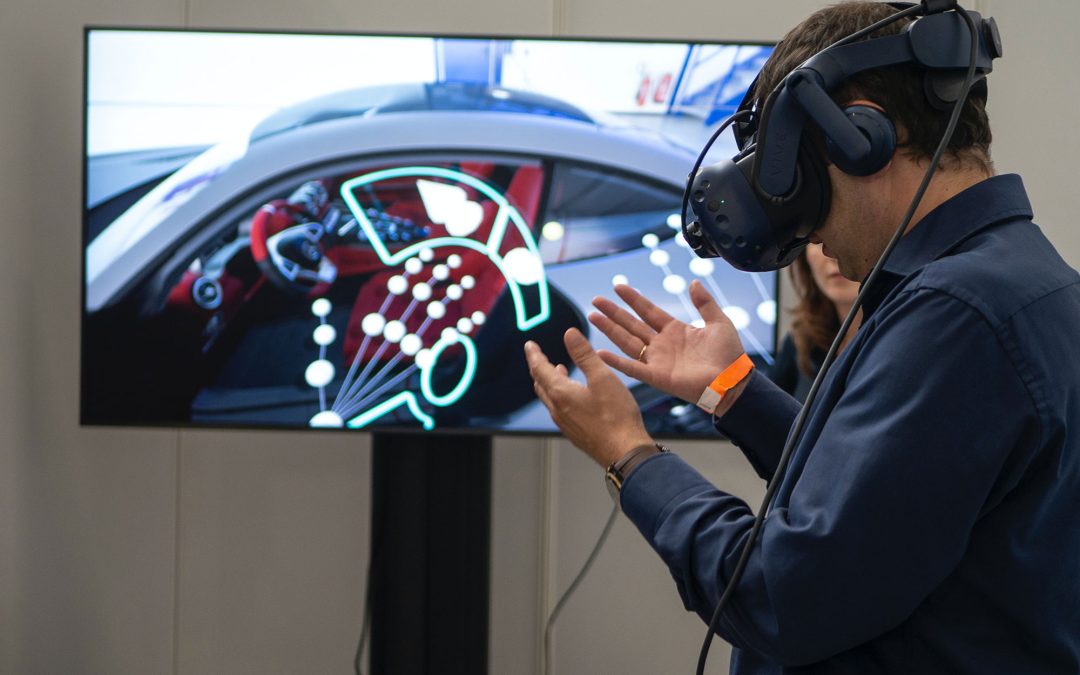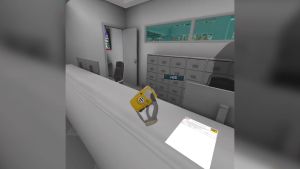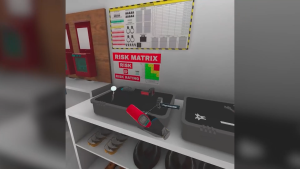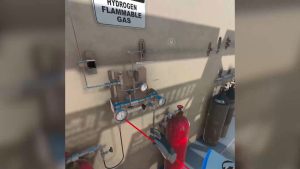AR Apps for the Oil & Gas Industry
3D Walkabout is an Australian based AR studio that designs AR apps for the Oil & Gas Industry.

Augmented Reality (AR) for Oil & Gas Industry
Augmented reality (AR) has significant applications in the oil and gas sector, transforming the way operations are conducted and enhancing productivity. Mobile apps with persistent AR can be utilised to add place markers to equipment, aiding maintenance inspections by providing real-time data and instructions. Furthermore, AR glasses can be leveraged to display essential information, enabling hands-free operation and improving efficiency in the field. AR models serve as powerful tools for showcasing tools, equipment, and facilities to stakeholders and clients through mobile devices, offering immersive experiences and aiding in decision-making processes. Additionally, AR digital twins contribute to collaborative efforts and planning, providing a virtual representation of assets and enabling teams to visualise complex operations and identify potential challenges.
What are the benefits of AR for the Oil & Gas Industry ?
Enhanced training thanks to field simulation to create real-life scenarios
Ability to develop situational awareness with minimal risk to colleagues
Address reasons for smaller accidents by reviewing occurrences
Enact and review emergency response for all incidents
Ability to visualise subsea and subsurface technology
Improve working practices by reducing bottlenecks
Optimize performance by simulation and analysis of adjustments to practice
Allow for immersive training to enhance colleague understanding
Reduce costs by allowing for remote surveying of equipment
Support sales and product development by enhancing customer communication
How is AR being used in the oil & gas industry?
AR is used in various aspects of the oil and gas industry. The inherent portability of AR means it can easily be used in the field. Innovations such as AR headsets that clip onto hard hats enable hands-free instruction and precision AR animation means clear access to information resources about equipment. Tools, step-by-step instructions and details about parts can all be demonstrated visually.
Precision instruction means improved understanding and more effective learning which, in turn, improves safety and minimises accidents. When trainees in a virtual oil refinery turn their heads, they can see what they would in real life. The opportunity to experience these complex environments is invaluable, and AR makes this possible without the cost of flights to sites.
AR actively prevents accidents by allowing workers to foresee potential hazards and, in some cases, eliminate them completely thanks to them being able to carry out repairs and monitoring with the aid of remote assistance.
The oil and gas industry is embracing AR on a commercial level too. Visual representation of systems and functions means product development comes to life for customers and potential investors. All parties are fully informed and have a full understanding of the concepts and processes being discussed, leading to better communication and better results.
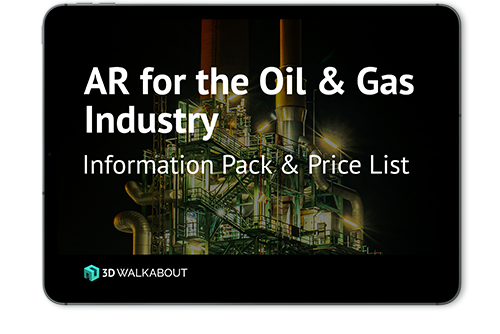
Brainstorm your ideas on 1300 00 3392
If you’d like to receive our full ‘AR for the Oil & Gas Industry Information Pack & Price List’ please add your details below.
The industries we work in
AR Oil & Gas Industry Case Studies
AR Oil & Gas Industry Articles
AR Oil & Gas Industry Videos
Frequently Asked Questions
What is fuelling the growth of AR?
The main trend fuelling the growth of augmented reality is the increased development of smartphone and tablet applications. Initiatives such as ARKit from Apple mean that AR and VR are widely available. Awareness of the capability of the technology is growing, along with an understanding of its value across almost every business and industry sector.
What is VR in crude oil?
VR in crude oil refers to the use of virtual and augmented reality to simulate the rig, whether offshore or on land. Its use allows workers to train remotely, minimising risk to themselves and other workers. It also enables accurate modelling of equipment to allow for detailed instructions for operation, maintenance, or repair.
How is virtual augmented reality used in the oil and gas industry?
Virtual augmented reality is used to improve safety, enhance training, improve working practices, and improve communication with customers. It can be adapted to allow simulation of real-life rigs without the expense of travel and gives technicians a way to monitor, repair and rework equipment with minimal risk to their safety.
How is virtual augmented reality used in the oil & gas industry?
Whilst VR is a fully immersive digital experience, AR augments digital elements onto your surroundings, typically via the Metaverse using the camera on a phone or tablet. The oil and gas industry utilises AR to visualise and test planned changes to equipment, as well as oversee on-site work without being physically present. AR is also invaluable for providing detailed training to new employees, without the costs involved with transporting them to the site.
How is virtual augmented reality used in the oil and gas industry?
Virtual augmented reality is used to improve safety, enhance training, improve working practices, and improve communication with customers. It can be adapted to allow simulation of real-life rigs without the expense of travel and gives technicians a way to monitor, repair and rework equipment with minimal risk to their safety.















